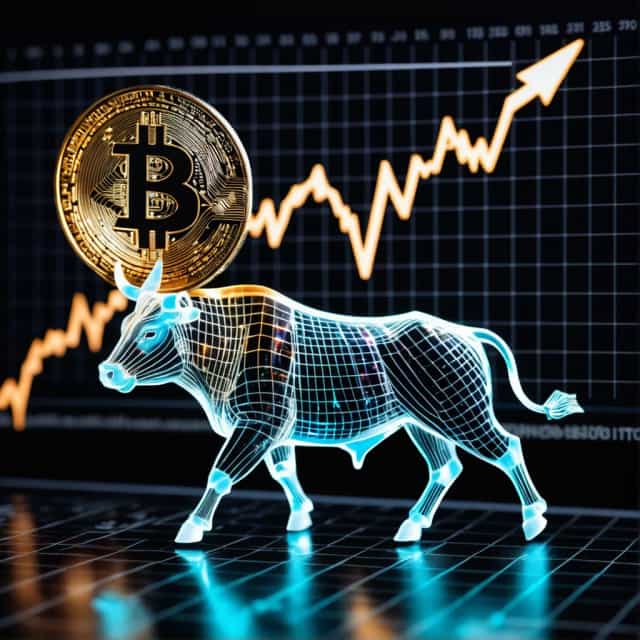
Image source: Block Media
Deutsche Bank Forecasts Bitcoin and Gold as Future Central Bank Reserve Assets by 2030
Deutsche Bank, one of Germany’s leading financial institutions, has published a groundbreaking report titled “Gold’s Reign, Bitcoin’s Rise,” projecting that Bitcoin (BTC) and gold could become integral components of central bank foreign exchange reserves by 2030. The analysis sheds light on the evolving roles of these two assets within the global financial ecosystem, underscoring their growing significance as hedges against inflation, geopolitical instability, and currency risk.
Bitcoin and Gold: The Modern Hedge Against Risk
The report highlights a pivotal shift in financial dynamics, explaining that Bitcoin’s historical volatility is steadily declining while institutional trust in the cryptocurrency climbs. Bitcoin is increasingly being likened to gold due to its fixed supply, liquidity, and strategic value. Deutsche Bank’s analysts assert that both assets are emerging as reliable modern hedges against inflation and geopolitical uncertainty—an assertion backed by ongoing trends demonstrating their adoption.
Additionally, the findings indicate a declining trust in the U.S. dollar among central banks worldwide, compelling them to diversify their foreign reserves. This emerging skepticism toward the dollar has fueled interest in alternative assets, most notably gold and Bitcoin. As financial systems adapt to these changes, Bitcoin achieved a record-breaking price of $126,000, while gold surged by over 40% year-to-date, reaching $4,000.
Shifting Reserve Strategies and Historical Parallels
The Deutsche Bank analysis draws comparisons between Bitcoin’s current trajectory and gold's historical journey as an accepted reserve asset. Marion Laboure and Camilla Siazon, the co-authors of the report, point to how gold faced initial skepticism before solidifying its role as a strategic reserve asset in the 20th century. Similarly, Bitcoin is carving its place amidst doubt, demonstrating characteristics of a safe haven asset with significant potential for sovereign integration.
“With its predetermined issuance cap, increasing liquidity, and growing appeal to institutional investors, Bitcoin is evolving into a cornerstone of financial stability, reflecting gold’s legacy as the same in previous eras,” Laboure and Siazon noted in their analysis.
This comparison bolsters the hypothesis that Bitcoin’s strategic importance may soon rival gold’s position in central banking. The report’s authors suggest that within the next five years, both assets could be formally integrated into central bank reserves as the financial sector continues to diversify away from dollar-centric strategies.
Growing Corporate and Institutional Adoption
The report also emphasizes the escalating adoption of Bitcoin among private corporations, which further validates its reliability as a reserve asset. Currently, hundreds of companies are managing a portion of their corporate treasuries in Bitcoin, consolidating its position as a dependable financial instrument.
Deutsche Bank highlights this trend as a potential catalyst for broader bitcoin adoption by sovereign entities, noting that institutional usage inherently strengthens Bitcoin's reputation as a safe asset. As private and public institutions increasingly explore its strategic benefits, its trajectory mirrors the widespread institutional accumulation of gold in the past.
Central Banks’ Gold Accumulation Signals Broader Trends
Despite Bitcoin’s meteoric rise, the report underscores that central banks continue amassing gold as a safeguard to hedge against risks associated with the U.S. dollar’s fluctuating dominance. Contributing to global financial stability, gold serves as both a historical and contemporary cornerstone of reserve asset portfolios.
The report concludes with a bold forecast: “As financial institutions reassess their reserve management strategies in response to shifting economic landscapes, Bitcoin and gold are poised to redefine the structure of global foreign exchange reserves. Both assets could become indispensable components of central banking frameworks in the coming years.”
The Future of Reserve Asset Allocation
Deutsche Bank’s analysis opens the door to a transformative outlook for global financial systems. As debates surrounding inflation-proof assets escalate, the dual rise of Bitcoin and gold reintroduces an era of diversified reserves. The enduring appeal of gold and the growing institutional validation of Bitcoin signal noteworthy changes ahead.
Whether it is Bitcoin’s fixed issuance or gold’s centuries-old legacy, these assets are reshaping the financial strategies of central banks and corporations alike. With projections aiming for 2030, their roles in shaping the future of monetary policy and reserve management could prove monumental in the decades to come.










